If you’re staying in the capital city or along the south coast of Iceland, you may want to add an extra region to your tour, the Reykjanes peninsula. Located in southwest Iceland – close to the Icelandic capital, Reykjavík – it’s an area that you may not realise is already on your itinerary.
Reykjanes is home to the Blue Lagoon, one of the country’s top attractions, and Iceland’s main airport, Keflavík. But beyond these two stops, the peninsula still has a lot to offer.
As you travel from the airport to Reykjavík, churning seas and expansive lava fields will be your striking backdrop. It’s well worth stepping off the beaten path to discover this stunning region.
Read on and get inspired by this guide to the peninsula's must-see spots. You could dive into Reykjanes’ culture and scenery on an unforgettable day trip.
- Experience the Reykjanes peninsula with these Iceland travel packages
Why visit the Reykjanes peninsula?
Its handy location means there’s no reason why you shouldn’t take some time to discover the highlights of the Reykjanes peninsula.
For instance, if you have time after picking up your rental car at the airport, it’s a great place for a detour before heading to Reykjavík. Or you could take a day trip to explore the peninsula while you’re staying in the capital.
Need more convincing? In 2015, UNESCO recognised Reykjanes as a Global Geopark where the landscapes and sites are of geological significance.
In fact, there are 55 fascinating geosites for you to visit on the peninsula. And because of its position on the Mid-Atlantic Ridge, the land that makes up this region is some of the youngest in Iceland.
Come to Reykjanes and you’ll experience Iceland’s geothermal activity for yourself. You could see bubbling mud pools, walk alongside vast lava fields, and bathe in naturally heated spas. You might even want to hike to the famous volcanoes, when it’s safe to do so.
- Take the wheel on a self-drive tour of Iceland
.jpg)
1. Fagradalsfjall volcano
One of the things you're sure to notice when passing through Reykjanes is the variety of lava fields. And thanks to the region's volcanic activity, it's here that you'll find some of the youngest parts of Iceland.
In March 2021, Reykjanes experienced its first volcanic eruption in around 800 years. This eruption lasted for about 6 months and lava flowed from the Fagradalsfjall volcano into Geldingadalur valley. Since then, there have been several eruptions in the area.
- Learn about the newest eruption on our volcanic activity page
After so many years of remaining dormant, the recent activity might suggest a potential awakening. In fact, when deemed safe by local authorities, visiting these active sites has become an exciting reason to visit Iceland. Witnessing this natural phenomenon firsthand is certainly a memorable experience.
Before setting out to see the Fagradalsfjall volcano sites, check these websites for essential updates on accessing the site safely:
- Icelandic Met Office – for information on the weather and seismic activity
- Safe Travel Iceland – for any safety alerts
It’s also worth knowing that the ground is rough and hilly underfoot. And the weather in Iceland can be unpredictable. So you’ll need sturdy walking shoes or boots, along with waterproofs and warm layers.
We also recommend a daypack with plenty of food and water. This is because hikes can be long, taking several hours.
- Go on your very own Iceland volcano tour
- Related: Volcanic experiences to have in Iceland
Good to know: At Nordic Visitor, we stay up-to-date with volcanic activity in Iceland. We also make sure our clients are informed about any potential disruptions to travel plans and take care of any itinerary changes.
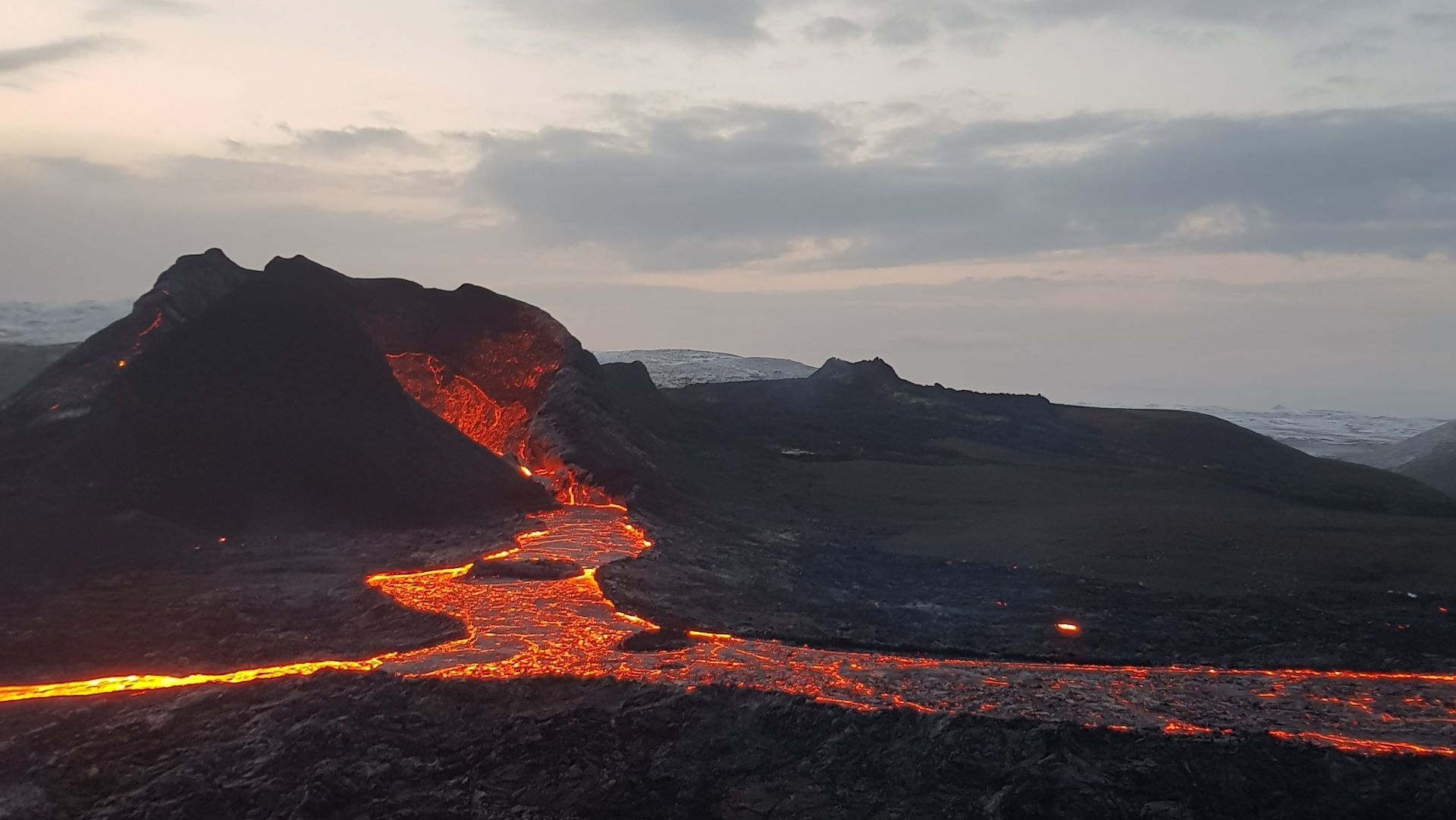
2. Kleifarvatn lake
Kleifarvatn is the largest lake in Reykjanes and a sight to behold. Explore this corner of the peninsula and you’ll enjoy the viewpoints as much as the drive.
The road hugs the shore of the lake, and you can admire towering mountains on the other side. We recommend you stop at Syðristapi, where you can climb atop a massive rock resembling a sea turtle. It gives unobstructed views over the lake and surrounding area.
Fun fact: Kleifarvatn lost 20% of its volume in 2000, when an earthquake opened a fissure on the lake's floor. This caused the lake to drain into the nearby ocean through a subterranean channel. It has since recovered its volume almost entirely.
- Go on a midnight sun tour of Iceland in summer
- Related: Iceland in Summer – 12 things to do and see
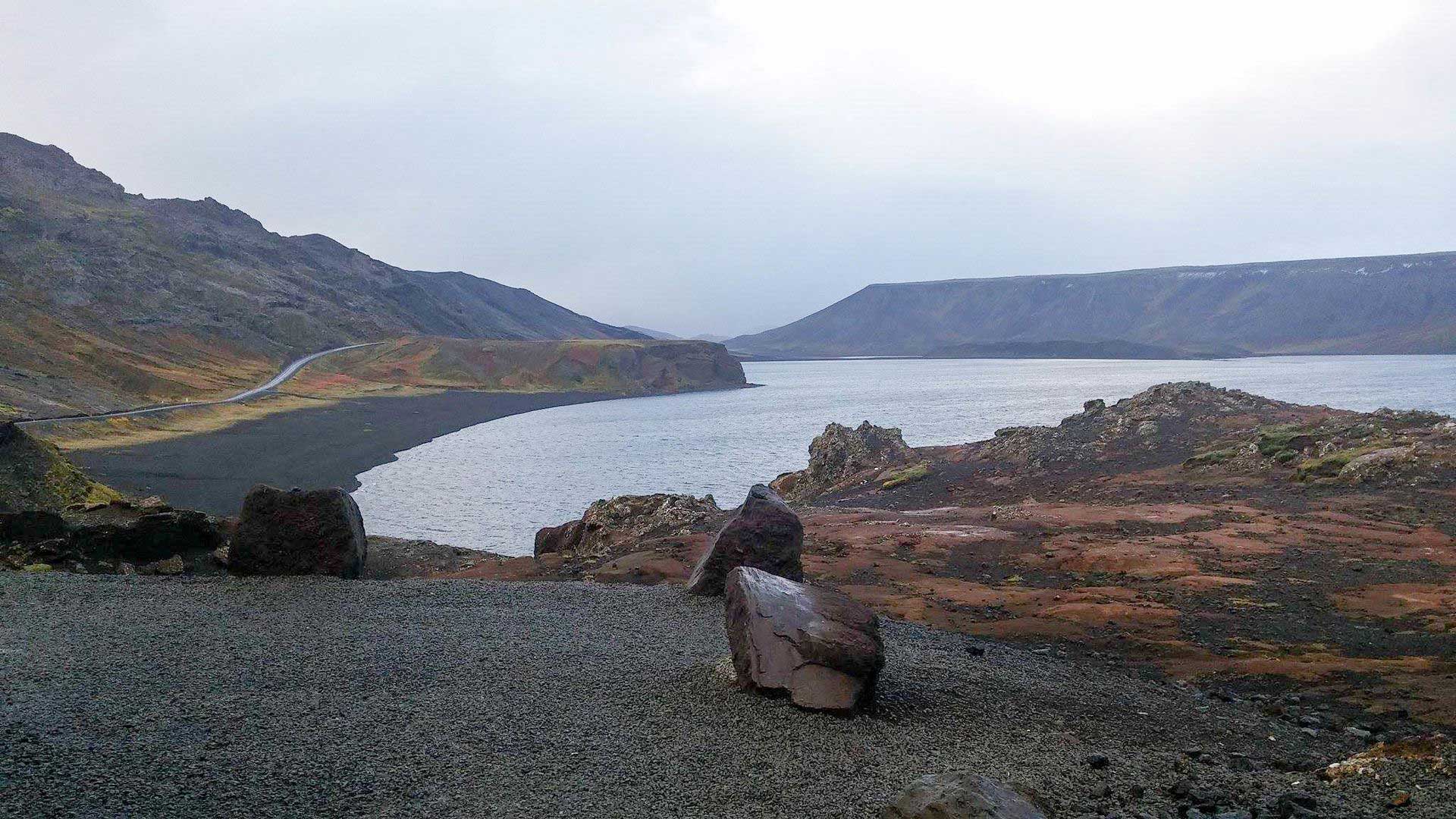
3. Bridge Between Continents
Along Iceland’s rugged landscape, you can really see the rift between the active tectonic plates. As the Eurasian and North American plates meet here, they create the Mid-Atlantic Ridge.
One way to experience it is to visit Þingvellir National Park. However, step between the two plates on the Reykjanes peninsula at the Bridge Between Continents.
It is also called the "Leif the Lucky Bridge" and acts to symbolically connect the two land masses. Cross the small footbridge which offers a nice view of the rift.
4. Krýsuvík & Seltún geothermal areas
You won’t want to miss Krýsuvík, which lies atop a fissure zone created by the separation of the Mid-Atlantic Ridge.
Within this area, you’ll also find the dramatic Seltún geothermal field, where volcanic fumaroles, mud pools and hot springs have formed.
The spectacular landscape looks painted with shades of bright yellows, reds and greens. This is the result of sulphur interacting with the other minerals in the soil. You’re in for a colourful time at Seltún and Krýsuvík.
It’s worth noting that a visit to Seltún is an adventure for all the senses. You’ll for sure notice the smell of sulphur that escapes from the geothermally active area.
Reykjanes was even named “smelliest tour in Iceland” thanks to sites like Seltún and Gunnuhver (further down our list). But don’t worry, it’s safe and will make for a memorable visit!
- Take an active tour of Iceland to go on volcano hikes and other adventures
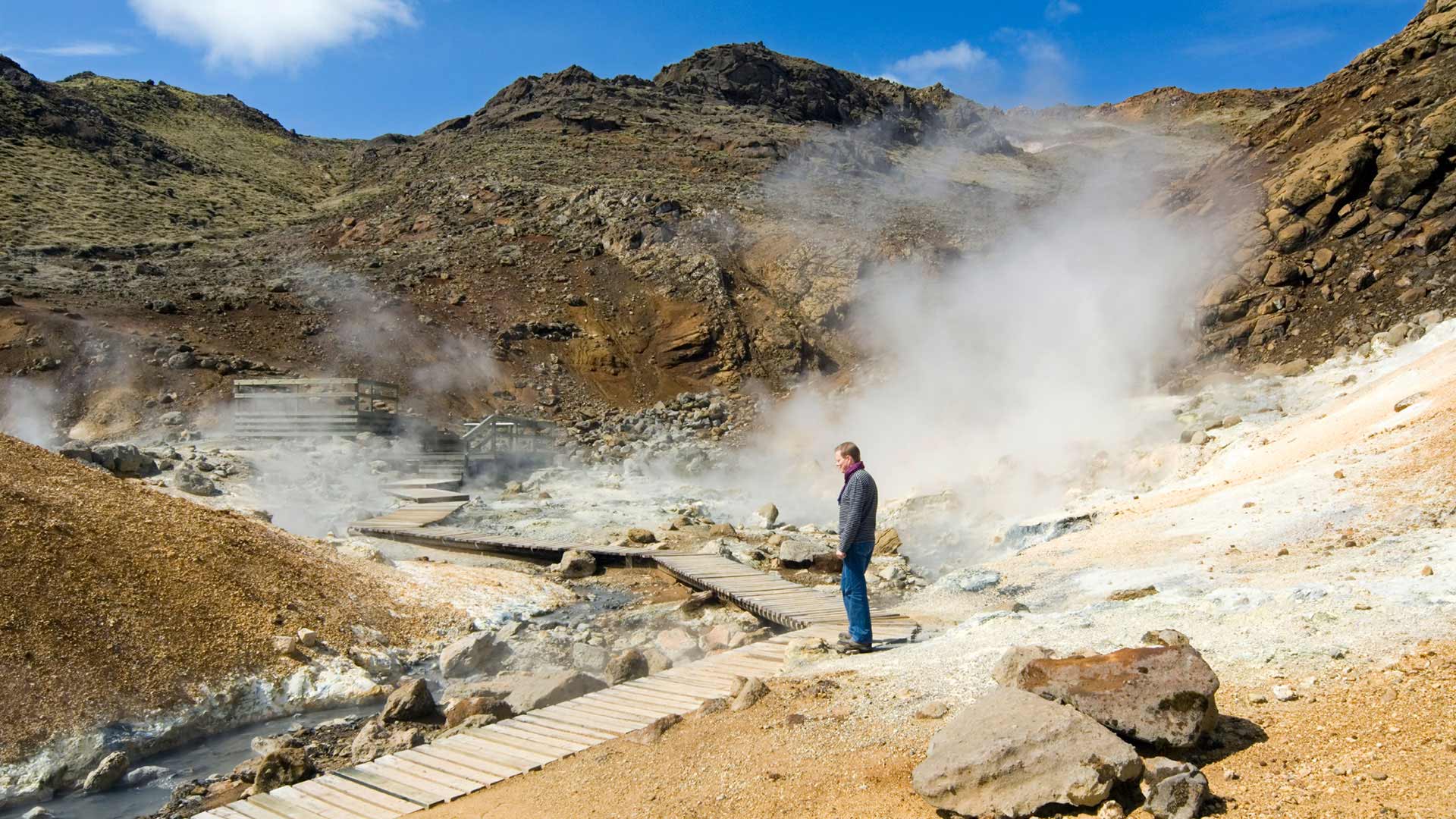
5. Reykjanestá cliffs
The southwesternmost tip of the Reykjanes peninsula is called Reykjanestá. Here you'll find stunning cliffs and sea stacks that are constantly battered by the sea.
Alongside the towering sea cliffs, you could climb the hill Valahnjúkur. It is an easy walk to the top along a marked path and gives a good vantage point over the breathtaking coastline.
You could also try to find the Last Great Auk statue by sculptor Todd McGrain. It is in memory of the last breeding pair of great auk (a penguin-like species) killed on Eldey island in 1844.
Nearby take some time to visit Reykjanesviti Lighthouse. It is Iceland’s oldest lighthouse and a great area to go for a stroll or have a picnic on a nice day.
If you're a keen birdwatcher, you'll enjoy spotting them along the sea stacks just offshore. They are home to numerous colonies of sea birds. The largest stack, Karl, has a large colony of kittiwakes. Legend has it that Karl might have been a troll caught out by the sunrise.
Please note: Be careful when it comes to nesting birds along the coast, especially Arctic Tern. They are notoriously territorial and very effective when it comes to defending their nests.
- Book a northern lights travel package of Iceland to make the most of a winter trip
- Related: Best times and places to see the northern lights in Iceland
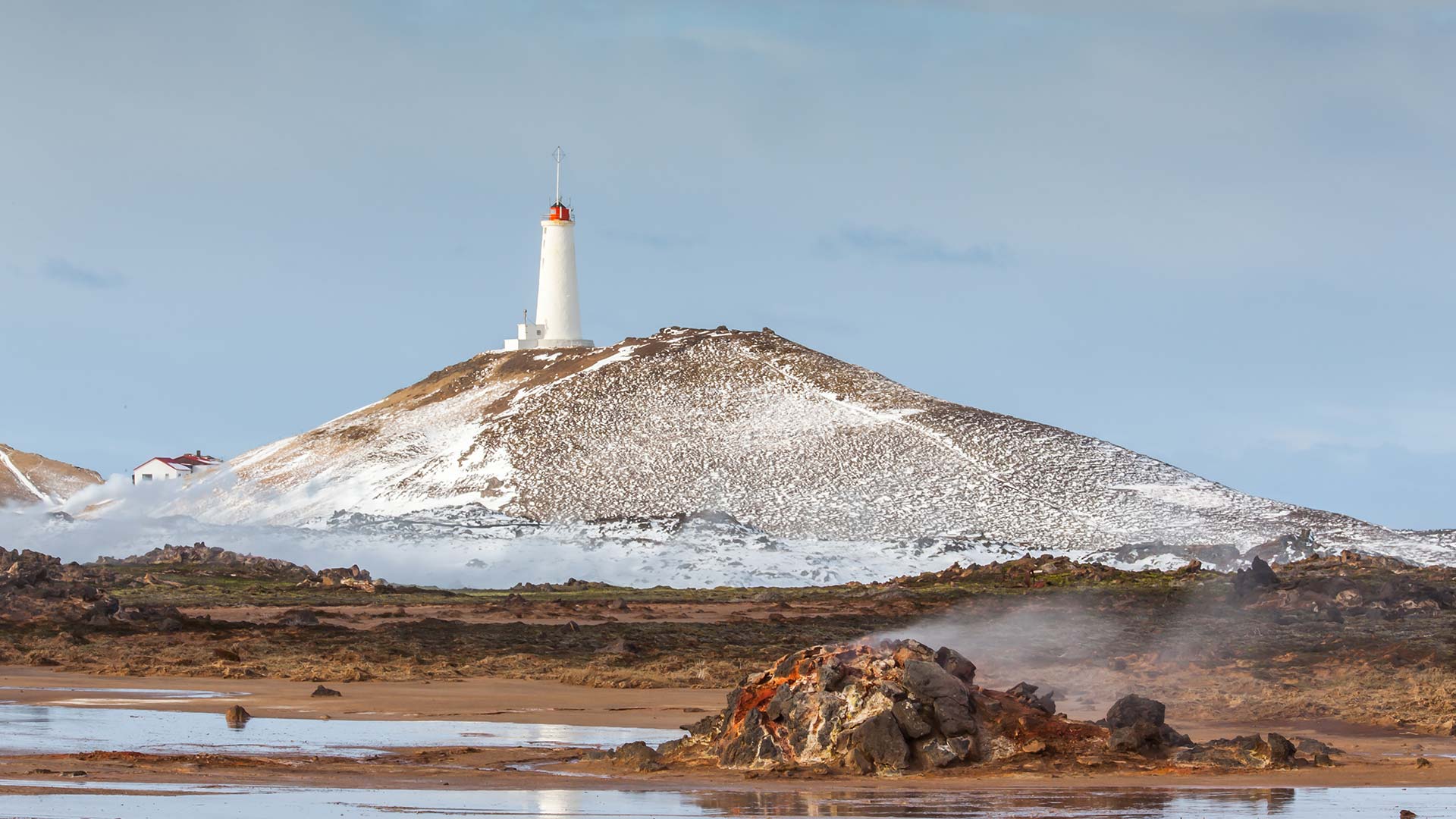
6. Gunnuhver hot spring
Not far from Reykjanestá, you could wander through the mud pools and steam vents of Gunnuhver.
Gunnuhver is the largest mud pot in Iceland, and the degree of its activity changes depending on the geothermal and volcanic activity underground.
The gases emanating from the ground turn the surrounding lava rock into bubbling clay and the water to acid. It’s a very impressive sight if you're intrigued by geology.
Did you know? The area was named after a ghost, Gunna. The story goes that some 400 years ago she was apparently causing disturbances in the area until the local priest set a trap and she fell into the hot spring. Ouch!
- Discover hidden gems with off-the-beaten-path itineraries of Iceland
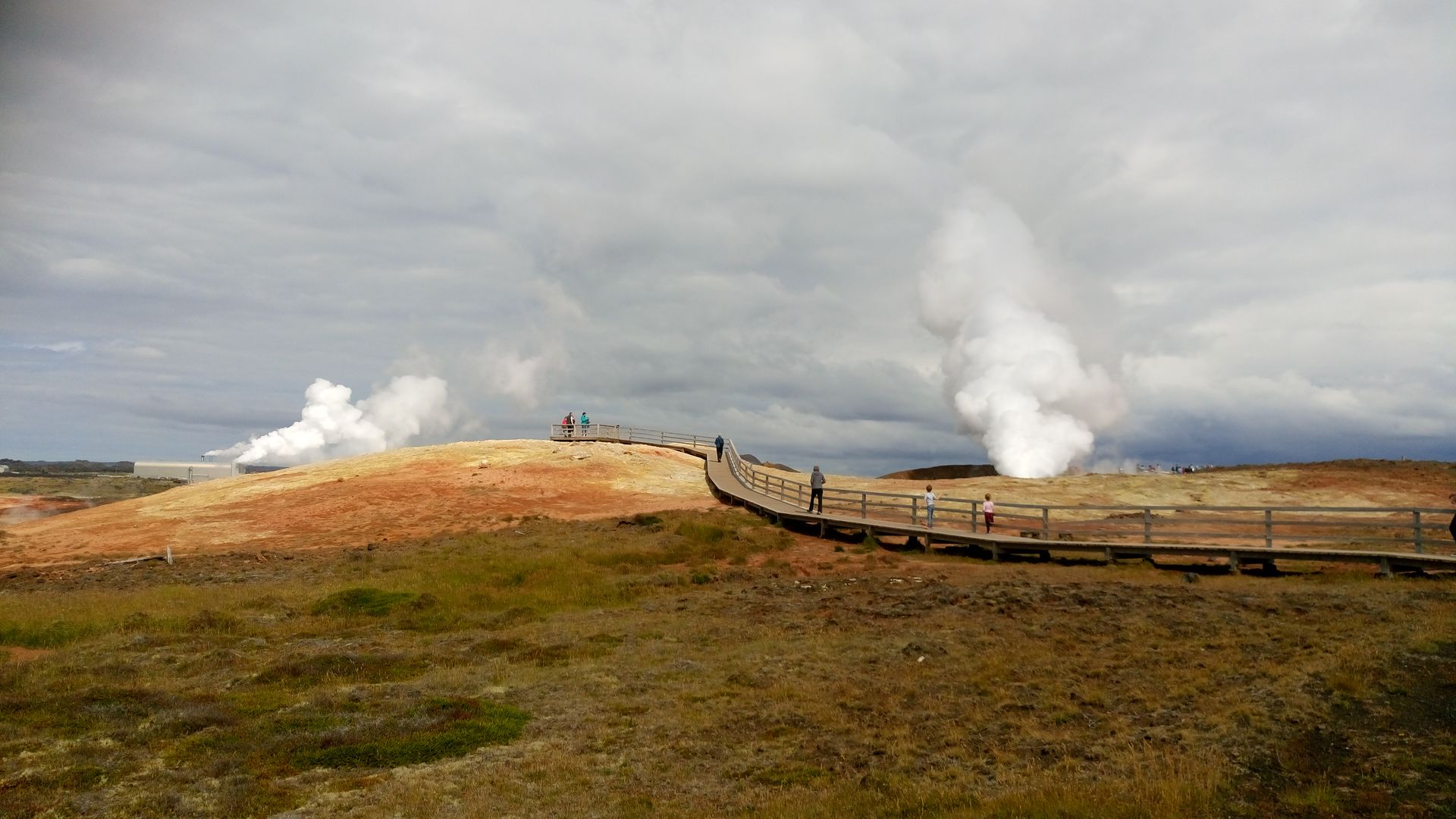
7. Grindavík
You could visit the village of Grindavík to explore or stop for a spot of food. It’s best known as the nearest village to the ethereal Blue Lagoon.
Grindavík is a charming small community that can be a good base for a day out in the area. Explore the many hiking trails with dazzling panoramas and the local swimming pool. You could also try your hand at golf as Grindavík is home to one of south Iceland's best golf courses.
8. Blue Lagoon
We couldn’t mention the top places to visit on the Reykjanes peninsula without suggesting you stop by the Blue Lagoon. You'll quickly see why this geothermal spa is renowned for its iconic milky blue pools and is well worth a visit.
Enjoy a soothing moment of relaxation along the sprawling complex of hot pools full of mineral-rich water.
There are different tiers of entry packages depending on how much you want to treat yourself. If you fancy a luxury experience, why not book a stay at the Retreat Hotel? You’ll even get access to the exclusive lagoon and spa ritual.
When adding this highlight to your itinerary, make sure to plan at least 90 minutes to 2 hours to take advantage of all the benefits of the Blue Lagoon.
- Browse luxury tour packages in Iceland for an exclusive stay
- Related: Your complete guide to the Blue Lagoon geothermal spa
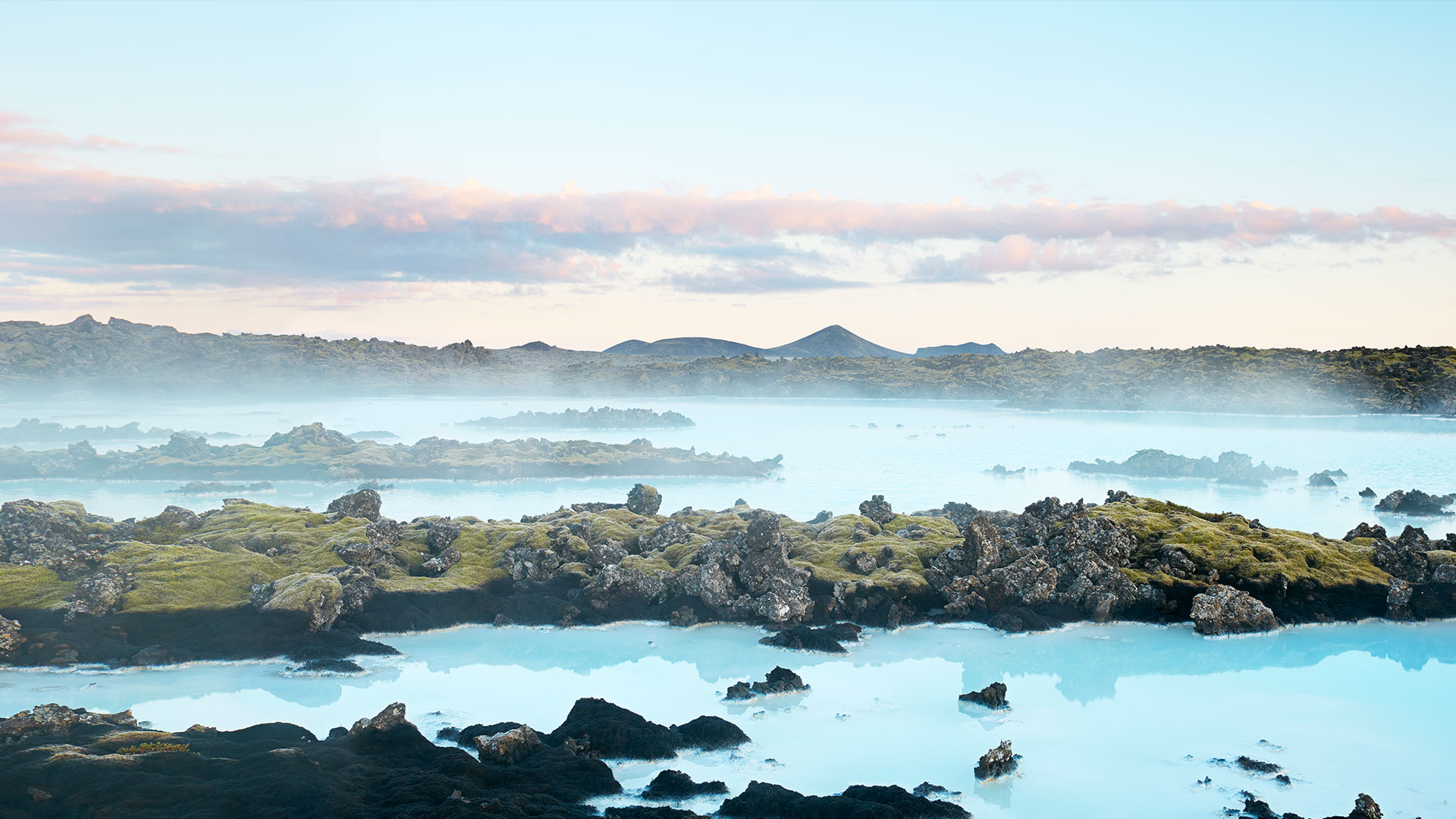
See the top sights on the Reykjanes peninsula
It's good to remember this list doesn’t include some of the cultural tourist attractions you’ll find on the Reykjanes peninsula. Things to do in this region are surprisingly plentiful and diverse when you look into it.
Pair your exploration of the dramatic landscape with a visit to the Icelandic Museum of Rock ‘n’ Roll or Viking World for a full day trip.
If you’re keen to experience Reykjanes, you can add a day tour or extra day with your rental car to your Iceland itinerary.
Book with Nordic Visitor and you’ll get the personal service of a local travel expert based in Reykjavík. They'll arrange your accommodation, transport and activities for you. All you have to do is enjoy your time in Iceland!
When you’re ready to plan your getaway to the Land of Fire and Ice, get in touch or browse our Iceland packages to find your perfect fit.
